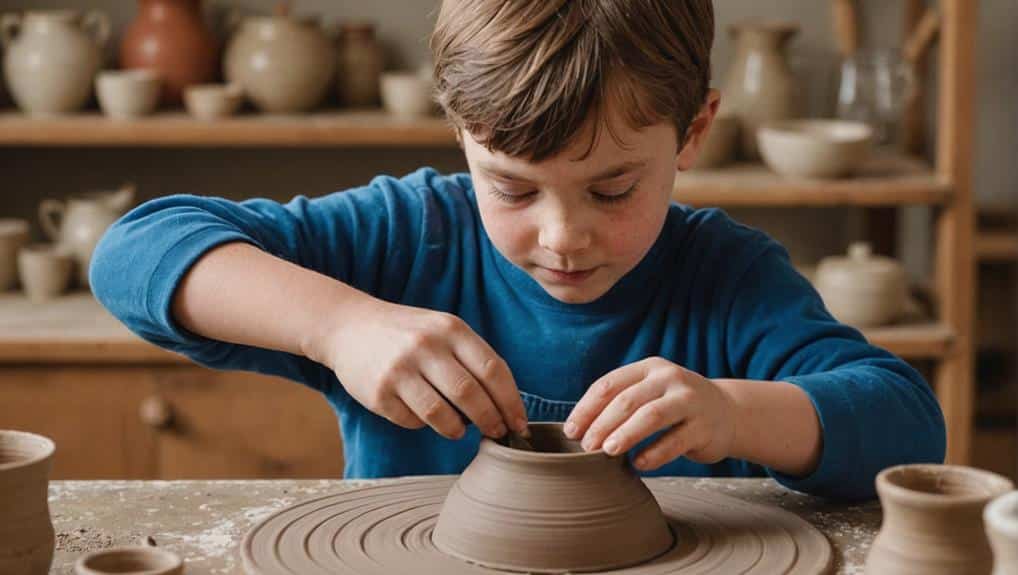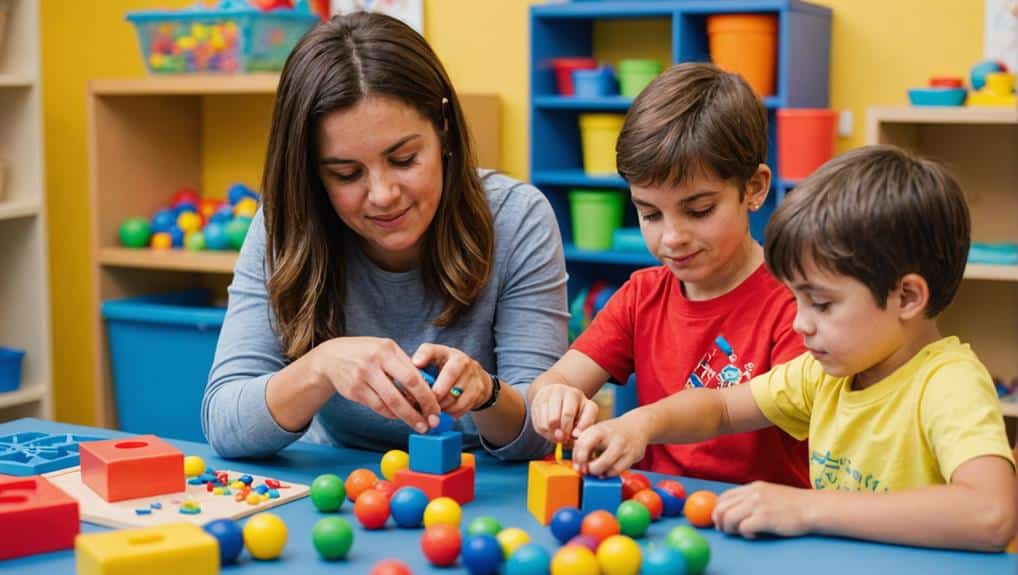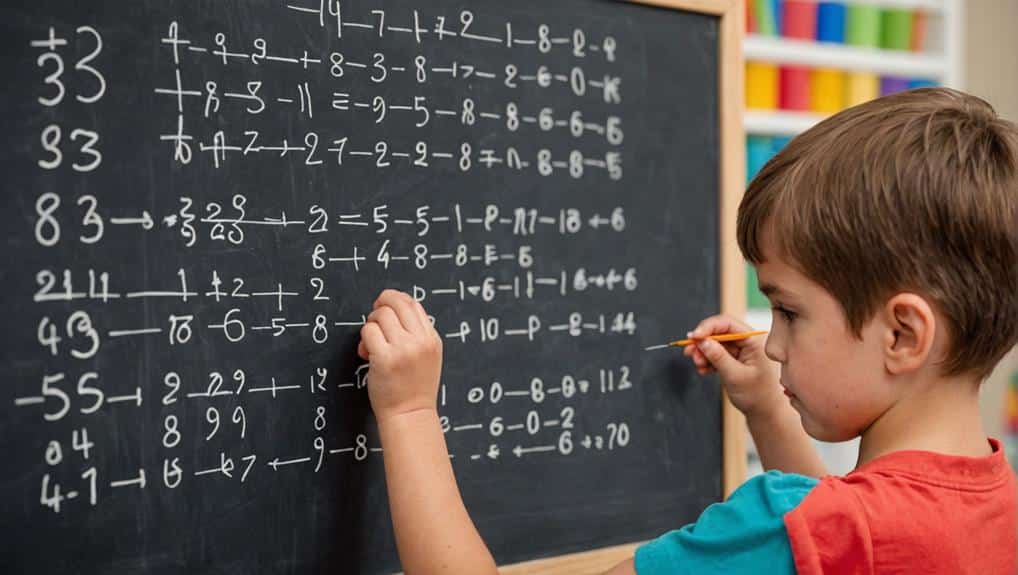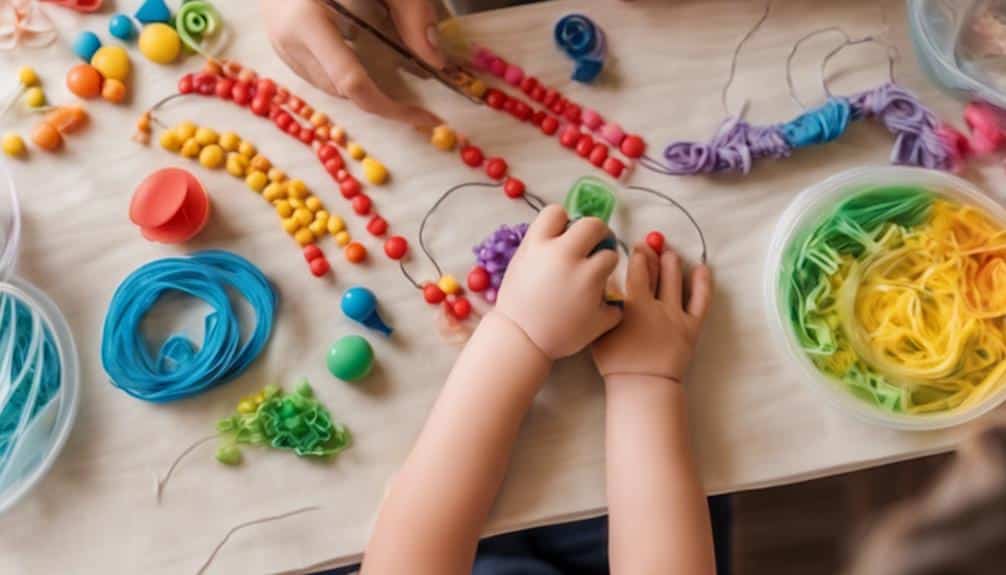Fine motor skills are essential in autism because they involve using small muscles for everyday tasks like writing, eating, or buttoning a shirt. Many people with autism struggle with these skills, making daily activities harder than they should be. But with the right help, there can be significant improvements. Occupational therapy and specific exercises can make a big difference in boosting fine motor skills in autism.
Improving fine motor skills in autistic children can significantly impact overall development and quality of life. When people gain better control over these slight movements, they become more independent and confident in everyday tasks. In this blog, we’ll examine different strategies and therapies that can help strengthen these skills and make life easier for those on the autism spectrum.
Key Takeaways for Enhancing Fine Motor Skills in Autism Therapy
- Occupational therapy is pivotal in addressing nuanced motor skill challenges in individuals with autism.
- Sensory integration techniques, part of occupational therapy, tackle the root causes of motor difficulties.
- Early intervention is crucial for better outcomes in motor skill development for children with autism.
- Parental involvement strengthens progress and reinforces therapy sessions to improve fine motor skills.
- Adaptive equipment and play-based activities are effective strategies for enhancing fine motor skills and fostering independence.
Understanding Autism Spectrum Disorder
Autism Spectrum Disorder (ASD) is an intricate neurodevelopmental disorder that significantly impacts sensory integration, communication, and social skills, leading to pronounced repetitive behaviors. Challenges with social interaction and communication in early childhood often characterize ASD. These difficulties are not just a single manifestation but a range of challenges that vary from one person to another.
Children with ASD often face challenges in understanding and interpreting other’s others and their intentions, resulting in impaired social interaction. They may exhibit repetitive behaviors like hand-flapping, which can assist in self-soothing or expressing difficulty. They might struggle with maintaining eye contact, starting conversations, or grasping social cues. Regarding communication challenges, they may show delayed speech development, and even when speech is developed, they often struggle to use language in a socially appropriate manner.
ASD is a complex condition that demands empathy, patience, and knowledge. Early detection during childhood is essential for implementing therapeutic strategies that can significantly enhance the child’s mental trajectory. As we work to support these individuals better, it’s crucial to understand that each person with ASD has distinct strengths and challenges. Recognizing this diversity is the initial step toward effective intervention and support.
Autism and Motor Skills
Many people with autism face challenges in fine motor abilities, necessary for everyday activities such as writing, dressing, and feeding. Autism and motor skills are closely intertwined, as sensory processing issues and brain differences often contribute to these challenges.
| Issue | Impact | Intervention |
|---|---|---|
| Delays in fine motor skill development | It affects hand-eye coordination and precision | Occupational therapy |
| Sensory processing issues | Contributes to nuanced motor challenges | Sensory techniques |
| Brain differences | Further exacerbates motor challenges | Assistive devices |
| Daily routine activities | Limited due to motor skill challenges | Improving fine motor skills |
| Academic success, independence, and social interaction | Hindered due to poor motor skills | Continual therapy and support |
Improving their fine motor skills can boost academic success, independence, and social interaction for individuals with autism. With targeted interventions, we can enable them to overcome these challenges, fostering a path towards an enriched life. Let us recognize the significance of these skills in autism therapy and work collectively to elevate them.
Motor Skill Development in Autism

Motor skill growth and excellent motor abilities often emerge as obstacles for children with autism. Besides cognitive constraints, the unique character of these impediments influences hand-eye coordination and sensory processing and can impede academic advancement. As part of their growth path, organized therapeutic play and personalized sensory tasks are vital in aiding these children in enhancing their fine motor skills. These tasks, selected by occupational therapists, can notably boost their involvement and involvement. Comprehending these obstacles and executing timely interventions are essential to supporting the comprehensive growth of autistic persons.
Autism and Motor Challenges
It’s not uncommon for children with autism to face challenges in developing fine motor skills. These difficulties are often unique from general cognitive impairments, significantly affecting activities such as writing, drawing, and using utensils. Fine motor difficulties can impact hand-eye coordination and academic performance, hindering the child’s children in school and daily life.
Brain differences and sensory processing issues are vital in causing these nuanced motor challenges. The way children with autism perceive and interact with their environment can differ significantly, leading to struggles in motor skill development. Sensory processing issues can complicate straightforward tasks, making them seem overwhelming or intense. In addition, sensory sensitivities can often result in intense experiences in regular environments for children with autism, further complicating the development of fine motor skills.
However, occupational therapy interventions offer hope. These targeted therapies, often using sensory techniques, can improve fine motor skills in children with autism. By addressing these challenges directly, we can enhance these children’s of life and independence. Remember, early intervention is critical; the sooner we identify and address these issues, the better the outcomes for the child’s development.
Enhancing Fine Motor Skills
While the challenges associated with fine motor skills in children with autism are significant, they are not insurmountable. With the help of pediatric occupational therapists, children with autism can overcome these challenges. Occupational therapy offers a variety of strategies and tools to help children with autism improve their motor skills. These techniques, often paired with sensory integration techniques, address each child’s child’s needs, considering their strengths and weaknesses.
Sensory integration techniques, a vital aspect of pediatric occupational therapy, address the root cause of motor difficulties in autism, which often stem from sensory processing issues. These interventions include exercises designed to help children better process and integrate sensory information, improving their fine motor skills.
Moreover, adaptive equipment can help children with autism perform daily tasks more efficiently and independently, further promoting the development of their fine motor skills. Play-based activities are another effective way to boost fine motor skills in a fun and engaging manner.
Challenges in Fine Motor Skills
Children with autism often face obstacles in fine motor skills, impacting their capacity to carry out tasks that demand accuracy and coordination, like writing or manipulating tools. These obstacles may arise from sensory integration challenges, which are prevalent in individuals with autism spectrum disorder (ASD). These difficulties are distinct from fundamental cognitive limitations and can significantly influence their daily life and academic performance. To aid these individuals in improving their overall growth and quality of life, it’s vital to tackle these motor skill deficiencies through interventions like occupational therapy and sensory strategies.
Understanding Fine Motor Difficulties
A substantial portion of individuals with autism encounter obstacles with fine motor skills, impacting various everyday activities, from writing to using tools and even fastening garments. These fine motor activities, which involve the small muscles of the hands and require precise hand-eye coordination, may appear minor to some. Still, individuals with autism can be challenging barriers that affect daily life and autonomy.
Impaired fine motor skills in autism can be attributed to several factors. Initially, individuals on the spectrum often face delays in developing these skills, which can make the performance of daily tasks more demanding. Furthermore, the family’s autism therapy can significantly influence the development and improvement of these fine motor skills. Consistent therapeutic approaches and positive reinforcement from family members can expedite progress and lead to better results.
Moreover, a distinctive aspect of autism is the presence of sensory sensitivities, which can complicate the execution of delicate motor tasks. For instance, a pencil or pencil can be overwhelming, making writing or dressing even more challenging.
Recognizing these nuanced motor challenges is the initial step toward discovering effective interventions. By acknowledging and understanding these obstacles, we can better support individuals with autism and assist in their progression toward independence and personal development.
Addressing Motor Skill Deficits
Given the substantial impact of nuanced motor challenges on individuals with autism, addressing these obstacles becomes an integral part of their therapy and development. These issues often manifest as difficulties in writing, drawing, and using utensils, significantly limiting a person’s independence and functionality. It’s crucial to note that, similar to autistic meltdowns, these are involuntary responses and not intentional behaviors. Research reveals that children with autism may experience delays in fine motor skill development compared to their typically developing peers.
Sensory processing issues and differences in the brain’s brain system significantly contribute to these challenges. Therefore, effective intervention strategies must take these factors into account. Just like understanding the triggers of meltdowns, identifying these challenges early can lead to proactive strategies and better management of these motor skill deficits. Occupational therapy, specifically designed to address these concerns, can be a valuable tool. Through the use of sensory techniques and assistive devices, occupational therapy can help individuals with autism to improve their fine motor skills.
Enhancing fine motor skills in individuals with autism can have wide-ranging effects. It can improve academic performance, self-care abilities, and social interaction skills. As we work to support this population better, understanding and addressing motor skill deficits becomes not just a necessity but a means to improving the quality of life for individuals with autism.
Sensory Processing and Motor Skills

Understanding the complex relationship between sensory processing and motor skills is essential in comprehending the growth of people with autism. Sensory processing issues significantly impact motor skill development, influencing fine motor skills involving small muscles, movements, and coordination.
Sensory information plays a crucial role in motor functioning in individuals with autism. Processing sensory information accurately is fundamental for acquiring and performing delicate motor tasks. When sensory systems don’t effectively interpret environmental signals, motor skills deficits can be caused; for instance, a child with handwriting might suffer from challenges in interpreting tactile information from holding a pencil rather than a lack of strength or control in their hand muscles.
Addressing sensory processing challenges is necessary for improving fine motor skills in autism therapy. By focusing on sensory integration, therapists can improve motor skills, paving the way for the person to engage more effectively in daily activities. Understanding the interplay between sensory processing and motor skills can help us devise more efficient therapeutic strategies, leading to better outcomes for individuals with autism.
Pediatric Occupational Therapy Interventions
Pediatric occupational therapy interventions diligently enhance fine motor skills in people with autism. With their deep understanding of the nuanced motor challenges faced by individuals with autism, occupational therapists use an empathetic and knowledgeable approach to creating tailored intervention plans. These plans are developed in close collaboration with the individuals and their caregivers, ensuring a holistic response to their needs.
Sensory techniques form a cornerstone of these interventions. By addressing sensory processing issues, therapists can help individuals gain more control over their movements and enhance their fine motor skills. This is critical to aiding individuals with autism in navigating their daily lives more effectively and independently.
Moreover, occupational therapists employ tools like pencil grips and weighted utensils to support the development of fine motor skills. These assistive devices and play-based activities provide an enjoyable and engaging way to refine motor skills. They allow individuals with autism to practice their skills in a relaxed and comfortable setting, promoting continuous learning and improvement. Ultimately, occupational therapy interventions serve as a powerful tool in enhancing the lives of those with autism.
Exercise Interventions for Autism

The association between autism and physical activity is an increasingly crucial focus in autism therapy. Exercise interventions, such as swimming, trampolining, or yoga, offer significant therapeutic advantages by improving fine motor skills and providing calming sensory input. Let’s investigate how these activities can be customized to meet personal needs, ultimately enhancing the quality of life for those with autism.
Autism and Physical Activity
Regular physical activity has greatly improved fine motor skills in individuals with autism. Diverse exercises like trampolining and swimming can enhance coordination skills and muscle tone, crucial components of motor skills in autism. These physical activities can be customized to the individual’s preferences and needs, making them practical and enjoyable.
Fine motor activities, such as selecting small items from play dough or utilizing construction kits, offer distinct pathways for enhancing motor skills in those with autism. These activities promote precision, skill, and coordination while providing a stimulating and engaging experience.
Occupational therapy programs focusing on physical activity and fine motor exercises have shown great promise. Therapists can design a tailored program to meet the specific needs and goals of individuals with autism, fostering improvements in their motor skills.
Below is a table presenting some suggested physical and fine motor activities for those with autism:
| Physical Activity | Fine Motor Activity |
|---|---|
| Trampolining | Selecting small items |
| Swimming | Utilizing construction kits |
| Climbing | Play dough tasks |
| Running | Drawing or coloring |
| Sliding | Building with blocks |
Therapeutic Exercise Benefits
Building on the concept of physical activity in autism therapy, therapeutic exercise interventions such as yoga and Pilates are of considerable value. These exercises offer a distinct pathway to improving fine motor skills by enhancing core stability, a crucial foundation for motor control.
Swimming, trampolining, and using gym balls or outdoor gym equipment can significantly benefit individuals with autism. These exercises assist in muscle tone, balance, and overall motor planning. Such exercise interventions go beyond simple physical activity, helping to nurture a sense of body awareness, coordination, and self-regulation.
Besides these, acceptable motor practice through specific activities like lacing, using construction kits, and looping rubber bands can provide opportunities to develop motor skills and continuously improve daily life functionality. These activities offer a structured, repetitive, and captivating way to promote the mastery of fine motor skills.
Activities to Enhance Motor Skills
Engaging in crafts and play-based activities can significantly improve fine motor skills in children with autism. These activities, which are both enjoyable and therapeutic, help refine their capabilities for more intricate tasks.
Children with autism often find joy and satisfaction in activities challenging their fine motor skills without overwhelming them. These include:
- I pick small items out of play dough, boosting skill and precision.
- Using construction kits to practice screwing and unscrewing nuts and bolts, nurturing hand-eye coordination and control.
- I played with dough and tools like scissors and rolling pins to develop grip strength and coordination.
- Looping a rubber band around a pencil is a simple yet effective task for acceptable motor practice that encourages focus and finesse.
These activities improve fine motor skills and foster confidence in children with autism. They provide opportunities for these children to master tasks, gain independence, and experience success. It is essential to remember that each child is distinct and will progress at their own pace. Therefore, patience, understanding, and an individualized approach are crucial.
Role of Early Intervention

While play-based activities are invaluable in developing fine motor skills in children with autism, the impact of early involvement cannot be overstated. Early involvement plays a vital role in addressing nuanced motor skill challenges, allowing these children to acquire and improve skills that will significantly enrich their ability to interact with their environment.
Research unequivocally supports the premise that starting interventions early leads to better outcomes in motor skill development. Children who receive this assistance demonstrate improved hand-eye coordination and agility, essential for accomplishing everyday tasks such as self-feeding and dressing.
Identifying fine motor difficulties can lead to more effective and targeted therapy interventions. This forward-thinking approach ensures each child has a tailored plan to suit their needs and potential. Specializing therapy for fine motor skills during the early years can significantly enrich overall development and foster independence in children with autism.
In this light, it is evident that early involve involvement in autism therapy is essential. It is a stepping stone towards empowering these children with the skills necessary for a more independent and fulfilling life.
Importance of Parental Involvement
Indeed, parental engagement is a cornerstone in autism therapy, particularly in strengthening the progress of fine motor skills in children. Studies emphasize the significant benefits children with autism acquire from consistent parental engagement in therapy sessions. Parents become essential reinforcement agents, enabling their child to practice and refine therapy techniques at home, accelerating fine motor skill advancement.
The following points can highlight the significance of parental engagement:
- Participation in therapy ensures ongoing and uniform support, which is crucial for skill acquisition in children with autism.
- Parenting and application of therapy techniques at home create a nurturing environment for the child’s child.
- Parental engagement cultivates a stronger parent-child connection, which is valuable for the child’s child’sogical well-being.
- Studies suggest that parents and active involvement improve acceptable outcomes in motor skills interventions.
Participating in therapy activities with their children strengthens the parent-child relationship and amplifies the therapy therapy. Thus, parents play a crucial role beyond simply attending therapy sessions; they actively contribute to their child’s skill development.
Motor Skills and Academic Performance

The development of fine motor skills plays a crucial role in the academic success of persons with autism, influencing their ability to perform tasks such as writing, drawing, and using tools. Nuanced motor challenges can hinder academic progress and full participation in classroom activities. Yet, these skills are not insurmountable hurdles but areas for targeted intervention and growth.
Research demonstrates a link between fine motor skills and academic performance in children with autism. This connection underscores the significant importance of focusing on these skills within the context of their education. Enhancing such skills through therapy can improve handwriting and fine motor coordination, positively impacting overall academic achievements.
Occupational therapy is instrumental in this regard. Skilled therapists can design interventions that specifically target the development of fine motor skills. Through regular sessions, individuals with autism can make significant strides in these areas. This progress can translate into improved academic performance, fostering a more inclusive and productive learning environment. Serving these students involves recognizing the role of fine motor skills in their educational progression and leveraging occupational therapy to support their success.
Creating Supportive Environments
Establishing supportive environments is critical to fostering the development of fine motor skills in individuals with autism. Structured spaces with clear routines provide predictability, enhancing the ability to comprehend and engage with surroundings. Visual supports are particularly beneficial in these environments, fostering independence and self-care skills.
Supportive environments should ideally include the following:
- *Implementation of routines and visual schedules*, enhancing predictability and understanding.
- *Structured settings with visual aids*, promoting independence and self-care.
- *Encouraging participation in daily tasks*, providing opportunities to practice and develop fine motor skills.
- *Positive reinforcement and gradually increased expectations*, building confidence and motivation.
Frequently Asked Questions
Why Are Fine Motor Skills Important for Children With Autism?
Fine motor skills are crucial for children with autism to reach developmental milestones and perform daily tasks. Occupational therapy benefits these children by utilizing sensory integration strategies to improve their motor skills and promote independence.
What Are Fine Motor Skills in DIR/Floortime?
In the DIR/Floortime therapy method, fine motor skills encompass the development of controlled hand and finger movements, sensory integration, and hand-eye coordination. These skills are critical for daily tasks and are often targeted in occupational therapy to improve sensory processing.
What Is the Role of Fine Motor Skills?
Fine motor development plays a critical role in daily tasks. It improves sensory integration and hand-eye coordination, improving self-sufficiency and independence in performing activities such as writing, eating, and dressing.
What Type of Therapy Helps With Fine Motor Skills?
Occupational therapy, a guiding light, improves fine motor skills. It employs sensory integration techniques and activities that bolster hand-eye coordination, offering a valuable tool for people seeking to navigate their world more easily.
Conclusion
Improving fine motor abilities in people with autism is like fine-tuning a musical instrument, allowing them to carry out their daily symphony of tasks more accurately and independently. Data shows that early intervention and ongoing parental backing are vital in this progress. Hence, creating supportive settings that encourage sensory integration, motor skill advancement, and academic achievement is crucial for enhancing the well-being of individuals in the autism spectrum.


Recent Comments